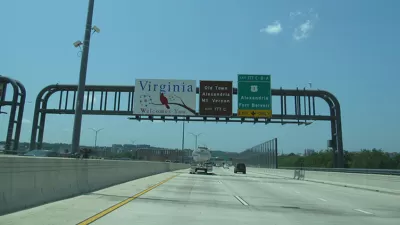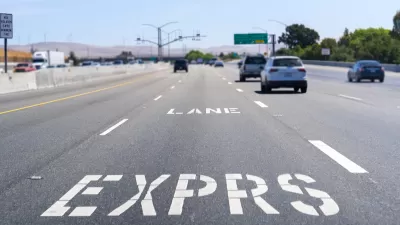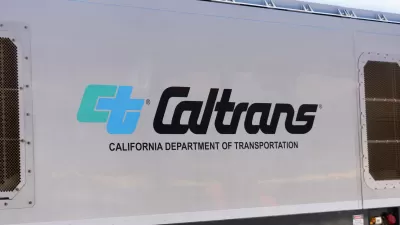High-Occupancy Toll lanes have become a popular tool to help reduce congestion and raise revenues. But recent projects in cities throughout the U.S. have failed to meet expectations. Eric Jaffe investigates the reasons why.
"The poor revenue performance of express tolls, while perhaps not universal, has certainly formed a disturbing trend," writes Jaffe. "According to news reports, Virginia's new HOT lanes on Washington, D.C.'s Beltway lost $11.3 million in their first six weeks, Houston's I-45 and U.S. 59 express lanes haven't covered their costs, and Atlanta's I-85 tolls fell short of the lowest fiscal forecasts. The most egregious offender may be SR-167 in metro Seattle, whose actual earnings fall consistently and astonishingly below revenue expectations..."
Austin Gross, who's studying SR-167 for his doctoral dissertation in economics at the University of Washington, has looked into the reasons why Seattle's HOT lanes have failed to meet expectations. "Gross says there are a multitude of reasons SR-167 hasn't met its revenue goals, but broadly speaking his work reduces things down to two main conclusions: poor traffic planning and a lack of driver familiarity with HOT lanes," explains Jaffe.
FULL STORY: Why Are HOT Lanes Struggling to Make Money?

Planetizen Federal Action Tracker
A weekly monitor of how Trump’s orders and actions are impacting planners and planning in America.

Chicago’s Ghost Rails
Just beneath the surface of the modern city lie the remnants of its expansive early 20th-century streetcar system.

San Antonio and Austin are Fusing Into one Massive Megaregion
The region spanning the two central Texas cities is growing fast, posing challenges for local infrastructure and water supplies.

Since Zion's Shuttles Went Electric “The Smog is Gone”
Visitors to Zion National Park can enjoy the canyon via the nation’s first fully electric park shuttle system.

Trump Distributing DOT Safety Funds at 1/10 Rate of Biden
Funds for Safe Streets and other transportation safety and equity programs are being held up by administrative reviews and conflicts with the Trump administration’s priorities.

German Cities Subsidize Taxis for Women Amid Wave of Violence
Free or low-cost taxi rides can help women navigate cities more safely, but critics say the programs don't address the root causes of violence against women.
Urban Design for Planners 1: Software Tools
This six-course series explores essential urban design concepts using open source software and equips planners with the tools they need to participate fully in the urban design process.
Planning for Universal Design
Learn the tools for implementing Universal Design in planning regulations.
planning NEXT
Appalachian Highlands Housing Partners
Mpact (founded as Rail~Volution)
City of Camden Redevelopment Agency
City of Astoria
City of Portland
City of Laramie





























